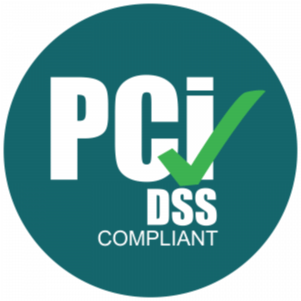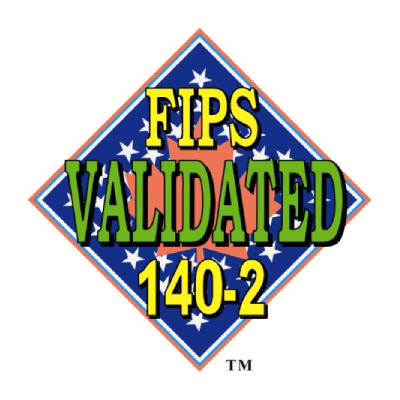Posted by Suresh Sathyamurthy
May 7, 2024
The recent acquisition of HashiCorp by IBM for a cool $6.4 billion sent shockwaves through the cybersecurity community. While the long-term implications remain to be seen, one thing is certain: the landscape of secrets management is about to undergo a significant shift. Here at Akeyless, we’ve been at the forefront of agile, cloud-native secrets management solutions, and we believe this is a critical juncture for organizations seeking the most secure and future-proofed approach to securing their workload identities and secrets.
The Open-Source Cloud and the Rise of HashiCorp Vault
The past decade has witnessed a shift towards cloud-based infrastructure. This, coupled with the rise of DevOps methodologies, necessitated a new approach to managing secrets – the critical keys that unlock access to applications and data within complex, dynamic environments. Enter HashiCorp Vault, an open-source secrets management solution that quickly gained traction due to its focus on multi-cloud support and a vibrant developer community.
However, Vault wasn’t without its limitations. Here’s where we delve into some key considerations for organizations in the wake of the IBM acquisition:
1. The Future of Open Source: A Question Mark
HashiCorp’s recent decision to switch Vault and Terraform’s license from Mozilla Public License (MPL) to Business Source License (BSL) had already raised concerns about its commitment to open-source development. With IBM’s acquisition of Vault, there is uncertainty regarding the future of its licensing model. Security researchers rely heavily on open-source code for transparency, vulnerability identification, and continuous improvement. It remains to be seen whether IBM will maintain Vault’s current BSL licensing or further shift towards a more closed, proprietary model. This lack of clarity presents a potential risk for organizations that prioritize transparency and community-driven security. The acquisition may also impact the level of community engagement and contributions, which have been crucial to Vault’s success and security thus far.
2. Potential Feature Stagnation and Realignment
Integration with IBM’s existing security portfolio is a likely outcome of the acquisition. However, this raises concerns about potential feature stagnation or a shift in development priorities that may not align with the core Vault user base. Will IBM prioritize features that benefit its broader security ecosystem, even if it comes at the expense of core Vault functionalities valued by its current users? Evaluating your current needs and future roadmap compatibility with IBM’s vision for Vault becomes crucial in this scenario.
3. Innovation and the Community Factor
A vibrant developer community fueled by open-source principles had been a key driver of Vault’s technology. With IBM at the helm, the question arises: will the acquisition stifle this spirit of community innovation? Security researchers heavily rely on the continuous contributions and bug identification within the open-source community. A slowdown in innovation or a shift towards a more controlled development environment could have security implications in the long run. Additionally, Vault received center stage attention by HashiCorp. However, IBM Security offers a wide portfolio of products, which may affect Vault’s product roadmap, support, and customer care. As Vault becomes part of a larger ecosystem, it remains to be seen how its development and customer experience will be prioritized and integrated within IBM’s existing offerings.
4. Vendor Lock-In and Flexibility Concerns
While IBM boasts a vast portfolio of security offerings, the acquisition raises concerns about potential vendor lock-in for Vault users. Will organizations be pressured to adopt other IBM security solutions to leverage Vault’s full potential? This lack of flexibility can hinder your ability to choose the best-of-breed solutions across your security landscape.
5. Integration Challenges and Security Gaps
Integrating Vault with IBM’s existing security stack may not be a seamless process. Compatibility issues and potential security gaps during the integration phase could create vulnerabilities. Organizations will need to carefully plan and execute the integration process, with thorough security assessments at each step.
6. Uncertainties Around Vault SLAs and Pricing Post-Acquisition
While there’s no word yet on how IBM will handle Vault SLAs after the acquisition, industry discussions suggest Vault users typically have smaller deployments. This raises a key question: can IBM maintain competitive pricing while offering robust Service Level Agreements (SLAs) typically associated with enterprise-grade support? Further amplifying this concern is IBM’s current focus on cloud-based SLAs in their public documentation. How this translates to individual products like Vault remains to be seen.
Akeyless: Your Agile, Cloud-Native Secrets Management Solution
Some vendors have chosen to build their product on open source technologies like Vault OSS. As we see today, these solutions have their own share of challenges and limitations—including but not limited to complexity, lack of high availability (no SLA), lack of compliance, and higher cost and confusion, especially given the recent licensing uncertainties. For these reasons, even from the early days of Akeyless, it has been our belief that open source solutions are not suitable security products for modern enterprises. We believe that vault tools based on open source will be left behind. In this dynamic and high-stakes digital landscape, taking risks with mission-critical Secrets Management simply isn’t an option — that’s why we avoided the open source, self-deployed approach from the start.
We are proud of the fact that Akeyless is the fastest growing enterprise-grade Secrets Management Platform in the world and the fastest growing alternative to conventional Vaults. The reason for our rapid adoption is because we have helped customers cut their TCO by up to 70%. Hear from our customers and learn why they migrated from conventional open-source based vaults to the modern enterprise grade Akeyless Vaultless® Platform.
Experience Akeyless yourself and also take a moment to see how we fare against other vaults.
- Pure SaaS Model: Unlike Vault, which requires on-premises deployment or cloud management responsibilities, Akeyless is a pure SaaS solution. This eliminates the need for infrastructure management, allowing you to focus on core security tasks.
- Agile and Scalable: Our cloud-native architecture ensures seamless scalability and effortless integration with your existing multi-cloud infrastructure.
- Focus on Usability: We prioritize user experience with an intuitive interface and automation capabilities, minimizing the burden on your security teams.
- Zero-Trust Security Model: Akeyless enforces a zero-trust approach, eliminating privileged access and ensuring granular control over secrets.
- Unparalleled Security Features: Our feature set includes encryption at rest and in transit, dynamic access control, robust audit logging, seamless integration with popular DevOps tools, and our DFC technology ensures your secrets are yours and yours alone.
Read more: Why Open Source Based Vaults Will be Left Behind
Looking Forward: Making Informed Decisions
The IBM acquisition of HashiCorp presents a unique opportunity for organizations to re-evaluate their secrets management strategy. While Vault has been a dominant player, it’s crucial to consider the potential risks associated with the acquisition and prioritize solutions that offer true agility, and a future-proof architecture.
At Akeyless, we’re committed to future-proofing your security with the most advanced and user-friendly secrets management solution available. Experience the difference for yourself. Contact us today to try our Vaultless® platform built to scale over multi-cloud, complex environments with ease —discover what Akeyless can do for you!












